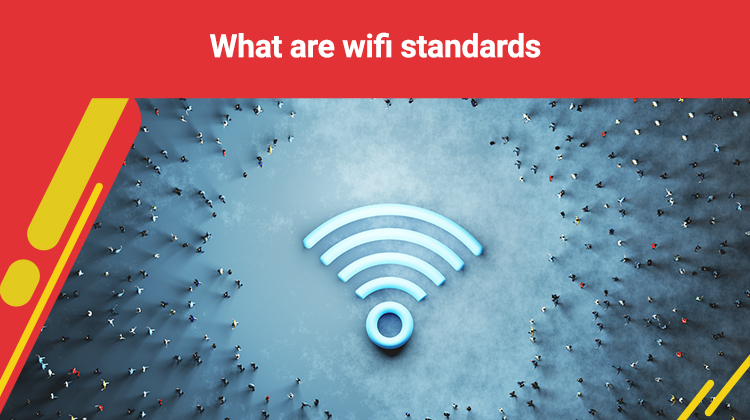What are wifi standards
-
41
-
13 Feb 2025
-
4 minutes

WiFi standards refer to the set of rules and guidelines that define how wireless networks should operate. These standards are developed by the Institute of Electrical and Electronics Engineers (IEEE) and play a crucial role in ensuring compatibility and performance across different devices and networks. In this article, we will explore what are wifi standards, what are the different wifi standards, discuss which wifi standard is the fastest, and introduce the upcoming WiFi 7 standard while understanding what is the newest wifi standard.
Different Types of WiFi Standards
In this section, we will help to answer the question “What are the different wifi standards.” There have been several generations of WiFi standards since the inception of wireless networking technology. Some of the most common WiFi standards include:
- 802.11b: This was the first commercially available WiFi standard, offering speeds of up to 11 Mbps in the 2.4 GHz frequency band.
- 802.11g: This standard improved upon 802.11b by providing faster speeds of up to 54 Mbps.
- 802.11n: Also known as WiFi 4, this standard introduced multiple-input multiple-output (MIMO) technology, allowing for speeds of up to 600 Mbps.
- 802.11ac: WiFi 5, the 802.11ac standard, brought even faster speeds of up to 1 Gbps and operates in both the 2.4 GHz and 5 GHz frequency bands.
- 802.11ax: WiFi 6 is the latest standard, offering improved WiFi connection efficiency, higher data rates, and better performance in crowded environments.
Which wifi standard is the fastest?
Out of all the WiFi standards mentioned above, 802.11ax (WiFi 6) is currently the fastest and most advanced standard available for wireless networks. With support for multi-user multiple-input multiple-output (MU-MIMO) technology, orthogonal frequency division multiple access (OFDMA), and higher order modulation, WiFi 6 can deliver significantly faster WiFi connection and better performance compared to its predecessors.
WiFi 6 & WiFi 7: Newest & Next Evolutionary WiFi Standard
As technology continues to advance, the demand for faster, more reliable wireless connectivity is ever-increasing. In response to this, the WiFi Alliance is currently working on developing the next evolutionary standard in wireless networking: WiFi 7. While specific details about WiFi 7 are still emerging, it is expected to build upon the foundation laid by WiFi 6 and further improve network efficiency, speed, and performance. The development of WiFi 7 aims to address the growing needs of modern applications such as virtual reality, augmented reality, high-definition video streaming, and Internet of Things (IoT) devices. By leveraging cutting-edge technologies and innovative approaches, WiFi 7 is poised to revolutionize wireless networking and provide users with an unparalleled online experience.
What is the Newest WiFi Standard?
The newest WiFi standard on the block is WiFi 6, also known as 802.11ax. This cutting-edge standard offers faster speeds, improved performance in crowded areas, and increased efficiency for all connected devices. WiFi 6 is designed to meet the ever-increasing demands of modern WiFi connection, making it the go-to choice for users who require top-notch performance.
Compatibility with Older Devices
While WiFi 6 offers groundbreaking advancements in wireless technology, it is also backward compatible with older devices. This means that even if you own devices that support previous WiFi standards such as WiFi 5 (802.11ac) or WiFi 4 (802.11n), they can still connect to a WiFi 6 network. However, to fully leverage the benefits of WiFi 6, it is recommended to upgrade your devices to be compatible with the latest standard.
Future-Proofing Your Network
Upgrading to WiFi 6 is a smart investment for future-proofing your network. As more and more WiFi 6-enabled devices enter the market, having a WiFi 6 network ensures that you can take full advantage of the latest technology advancements. Whether you are a heavy internet user, a gamer, or a business professional, WiFi 6 provides the speed, reliability, and performance you need for a seamless online experience.
Conclusion
In conclusion, WiFi standards play a crucial role in shaping the future of wireless communication. While WiFi 6 currently stands as the fastest standard available, the upcoming WiFi 7 is expected to set new benchmarks in terms of speed, efficiency, and performance. As technology continues to evolve, so too will the capabilities of wireless networks, ensuring that users stay connected and productive in an increasingly digital world.






